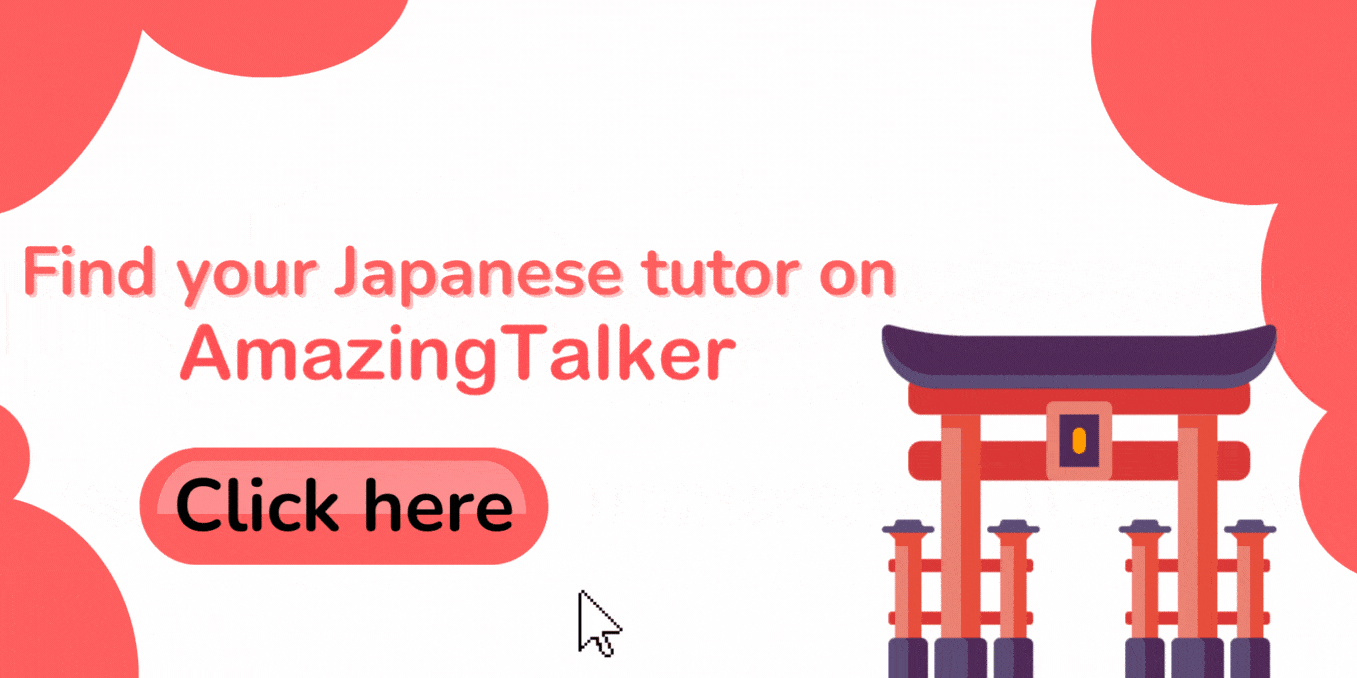How do you say goodbye in Japanese? Sayonara (さようなら ) right? No, this is not the right word. Are you confused already? Okay, let us shed some light on it. Sayonara (さようなら) is a word used to say goodbye to someone you can’t meet anymore or that you may take a long time to meet again. As such, the word is rarely used by the Japanese who are all very polite and cares so much about greetings, and it is not the most common way they say goodbye. Now it’s time to finish your Japanese conversations with the right words to say goodbye. Hope you have already learned how to say hello in Japanese, to start a conversation.
Top 20 Ways to Say Goodbye in Japanese
1. Sayonara (さようなら) – Farewell, Goodbye (formal, rarely used)

The word “Sayonara” has a strong sense of finality to saying goodbye. If you end your conversation with “Sayonara”. It can lead to a bit of confusion. In Japanese movies, the word “Sayonara” is only heard when someone is saying goodbye to a loved one who passed away, or to someone they will never see again.
2. Bai Bai (バイバイ) – Bye-bye (casual)

Bai bai is a casual way to say goodbye in Japanese, and it is pronounced easily just like in the English language. You normally hear young people using the word frequently, especially girls. The word sounds feminine, and they have a cute way of pronouncing it.
3. Jaa Ne (じゃあね) – See you (casual, frequently used)
This is the most common way and casual way to say goodbye. Jaa ne is mostly said to people that are close to us and almost at the same level as us, such as colleagues, coworkers, friends, family, etc. However, it is a little bit rude, and not advised to say Jaa ne to people older or your boss or teacher in school. There are other phrases that are more formal for that.
4. Mata Ne (またね) – See you later (casual, frequently used)
Mata ne is just a slight variation from Jaa ne. It’s also a casual way of saying goodbye to your friends, family, and people in your same social circle, telling them you will see them again soon. It is a common greeting you hear often in Japan and other Japanese-speaking countries.
5. Ittekimasu (行って来ます) – I’m leaving (when leaving home)
Sometimes you quickly need to go somewhere and inform someone that you will be back shortly. The right goodbye word to use in that situation is ittekimasu. It literally means “I will go and come back” or “I will be back.” When someone says this to you, the proper response back is 行ってらっしゃい (itterasshai), which means “go and come back safely” or “be safe!” It’s not really formal or informal, but you usually only say it when leaving your own home.
6. Ojama Shimashita (お邪魔しました。) – I have disturbed you (very formal)

When leaving someone’s home, you use the formal and polite term Ojamashimashita. Ojamashimashita is the past tense of Ojamashimasu (お邪魔します), which means “I will disturb you”. Ojamashimasu is spoken while entering someone’s home to greet them and express that you have come to spend some time with them without being too intrusive. When you leave, you say Ojamashimashita, which translates as “I have disturbed you.” This is a frequent manner of saying goodbye in Japanese, although it should not be used in your own home.
7. Shitsurei Shimasu (しつれいします) – Excuse my interruption (very formal)

Shitsurei shimasu is most commonly used in the workplace. It is used in form of saying “excuse me”. For example, if your cell phone rings and you need to answer it, you can say Shitsurei Shimasu (しつれいします) to say “excuse me” or more literally, “I am about to do something impolite so please excuse me”. This is of course in the present tense; you say this before you perform the action, so you use Shitsurei Shimashita (しつれいしました) in the past tense after you have had the phone call to express “sorry for being rude”. Remember to use this version after you have performed the action and not before.
8. Osaki ni shitsurei shimasu(お先に失礼します) – Excuse me for leaving ahead of you (casual)

Unless you are the last person to leave your workplace every day, you are going to need this phrase a lot. You address it to any of your coworkers remaining when you leave, and it essentially covers the awkwardness of the fact that you are going home while they’re still working. Osaki ni literally means “ahead,” while shitsurei shimasu is “excuse me” or “pardon me.” If you can’t manage the entire phrase, “Osaki ni” alone is perfectly acceptable, since the rest of the meaning is implied.
9. Gokurousama (ご苦労さま) – Thank you for your hard work (formal)
This term is usually heard in the workplace during work hours and when you are about to leave and call it a day. It is mainly used when speaking to people of a lower rank or status than you. For example, if you are the boss in your organization, you might say, “Gokurosama desu ”, but if it’s to a colleague or your superior, you will use a similar word, “Otsukaresama desu (お疲れ様でした )”. It has the same meaning and in terms of politeness, you are safer with the latter.
10. Otsukaresama Deshita (お疲れ様でした) – Thank you for your hard work(formal)
Yeah, we already mentioned this earlier. Otsukaresama desu is a safer and more formal way to say “Thank you for your hard work”. You can use it for your boss at work, a teacher at school, friends, colleagues, and family.
11. Oyasumi Nasai (おやすみなさい) – Goodnight (formal)

The greeting oyasumi nasai (おやすみなさい) is a formal way of saying goodnight, and it stemmed from the Japanese verb yasumu (休む), which actually has a lot of meanings: to be absent, to take a day off, to rest, to have a break, to go to bed or to rest. “Oyasumi nasai” is a Japanese polite expression for ‘have a rest’. This literal interpretation is not completely in line with the meaning, but still very close
12. Oyasumi (おやすみ) – Goodnight (casual)
Oyasumi (おやすみ) is the shortened and casual version of “Oyasuminasai”. Japanese native speakers tend to use this in casual situations, for example, in conversations with their friends and family members.
13. Mata Ato De (またあとで) – See you again (casual)
Mata literally means “again.” Mata Ato De is a casual expression used with friends when you expect to see them again soon. You can use this term for example, if you expect to meet your colleagues again shortly. Mata Ato De is very similar to Mata Ne, earlier mentioned in this article.
14. Jaa Mata ne (じゃあまたね) – See you later then (casual)
Jaa means “then”, “Mata” means see you later in Japanese. So “Jaa Mata ne” could be “see you then” or “then, see you!”. Again, it’s casual, so you will use it with friends, family, and people in your same social circle.
15. Saraba (さらば) – Farewell (old-fashioned)
Saraba is an old-fashioned way of expressing goodbye, and it is very similar to saying “adios!” The word also has a sense of finality to it, and it shouldn’t be said to your boss or people you still want to see again soon. However, you could use it as a joke amongst close friends.
16. Odaiji Ni ( お大事に ) – Get well soon (formal)

As a parting expression, you can use odaiji ni. In Japanese, it means “Get well soon“, If you went to the doctor because you were sick, he or she would say this instead of saying farewell. You can also use this with friends, coworkers, or anyone who is leaving because they are ill, or to finish a phone discussion with someone who is under the weather.
17. Genki De ne (元気 で ね) – Take care of yourself (casual)
If someone is going on a long trip or moving to a different place and you won’t be seeing them for a long time, you can say 元気 で ね (genki de ne), which means “take care of yourself”.
18. O-Genki De (お元気で)- All the best (formal)
Another applicable way to bid farewell in Japanese is “o-genki de”. It means wishing the other person “All the best“. Although this is a formal way to say goodbye in Japanese, you can still use it when speaking to friends, especially if you won’t see them for a long time while departing on a trip or holiday break, or when it’s flu season and you’re wishing them good health, it’s customary to use this phrase.
19. Kiotsukete (気を付けて) – Take care (casual)

The Japanese phrase, Ki o tsukete means “take care.” It is the phrase you would casually use when saying goodbye to a friend (whom you expect to see again within a few days), family, a boss, or coworker (whom you expect to see the next day or after a weekend)
20. Okiotsukete Okaeri Kudasai (お気をつけてお帰りください) – Have a safe trip back home (formal)
Okiotsukete okaeri kudasai is a formal saying “Have a safe trip back home“. If you work in the hospitality industry, this Japanese phrase is something you need to know. You can also say this to your house guests who are about to leave.
| Expression | Meaning | When to use |
|---|---|---|
| Sayonara (さようなら) | Farewell, Goodbye (formal, rarely used) | Saying goodbye to a loved one who passed away, to someone you will never see again |
| Bai Bai (バイバイ) | Bye bye | With friends and family |
| Jaa Ne (じゃあね) | See you | With friends and family |
| Mata Ne (またね) | See you later | With friends and family |
| Ittekimasu (行って来ます) | I’m leaving | With friends and family (when leaving home) |
| Ojama Shimashita (お邪魔しました。) | I have disturbed you | (very formal) When leaving someone’s home |
| Shitsurei Shimasu (しつれいします) | Excuse my interruption | (very formal) Commonly used in the workplace |
Jaa Ne (じゃあね) or Mata Ne (またね) are commonly heard, but please note that these phrases are for friends and family members. They are informal ways to say goodbye in Japanese.
Sayonara (さようなら)’s meaning is closer to farewell. It is used in a formal occasion, like a loved one passing away, or Japanese people will say it to someone that they might not be seeing again ever.
Why Not Start Learning Japanese Today?
Japanese is more than just a language, it’s a way of life. When you start learning the language, you know more about Japanese culture, history, martial arts, entertainment, and fashion. So you might ask where can I learn Japanese? The best platform to learn Japanese is on AmazingTalker. This online, user-friendly, affordable platform offers a wide range of Japanese courses to suit your needs, as well as native, qualified, and passionate Japanese tutors to assist you. Such courses include Conversational Japanese, Japanese for beginners, Japanese grammar, Japanese for adults, Japanese for travel, etc. These courses are pocket as their price ranges from 11 – 40 USD per lesson. Some of the benefits of this platform are its flexible schedule, and you can book classes based on your own schedule. The course can be customized based on your specific learning needs, you also don’t have to commit financially as you can pay for each lesson
Time to say Goodbye!
Goodbyes are never easy, but we must definitely say them somewhere someday. In this article, we looked at 20 different ways to say Goodbye in Japanese. It is important to always practice those phrases so that it sticks to you and they will come easily when it’s time to use any of them. Remember that some goodbyes have a sense of finality with them, some are said to people you will shortly meet again, some to your friends and colleagues, some to older people in age and status, some can be said jokingly, etc. Their usage depends majorly on the situation you are in. After goodbye, you might also want to learn how to say good morning in Japanese. These and many more are available on AmazingTalker when you sign up with any of their Japanese tutors.
Discover the answers to your language-related questions on AmazingTalker’s Q&A page.

















